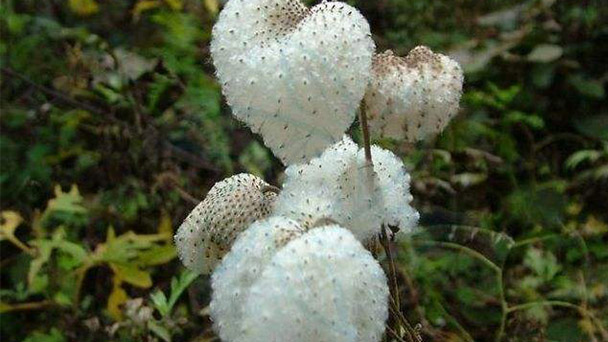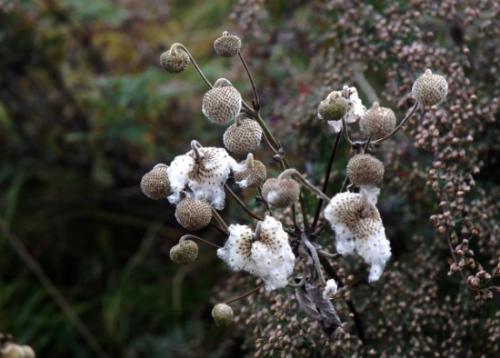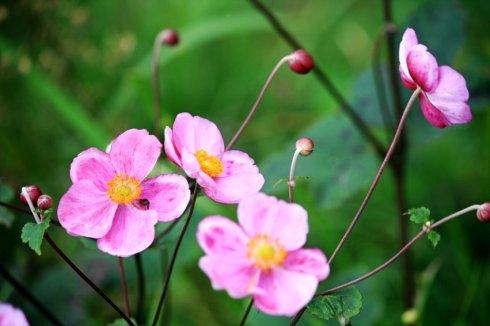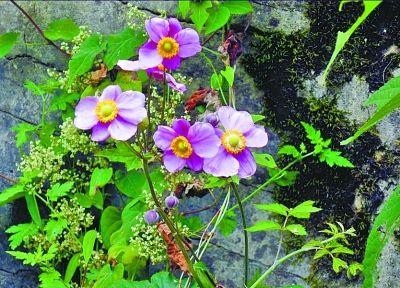Anemone vitifolia Buch.-Ham.ex.DC. profile
Written by Maggie
Nov 12 2020

Anemone vitifolia Buch.-Ham.ex.DC. is called the gypsophila, but some friends who have seen it say that Anemone vitifolia Buch.-Ham.ex.DC. is similar to fireworks. It is in full bloom. It’s so beautiful and alluring. Most of the flower friends may not be very familiar with Anemone vitifolia Buch.-Ham.ex.DC. Today, let’s get to know this Anemone vitifolia Buch.-Ham.ex.DC.!
Anemone vitifolia Buch.-Ham.ex.DC. picture

What is Anemone vitifolia Buch.-Ham.ex.DC.:
Anemone vitifolia Buch.-Ham.ex.DC. is a plant of the genus Anemone in the Ranunculaceae family. Distributed in Nepal, Sikkim, Myanmar, Bhutan, India and Tibet, Yunnan, Sichuan and other places in Mainland China. It grows in areas between 1,200 meters and 2,700 meters above sea level. It mostly grows in mountain grass slopes, ditch edges and open forests. It has not been introduced and cultivated manually.
Class: Dicotyledon Class
Family: Ranunculaceae
Genus: Anemone
Aliases: Gypsophila paniculata, clear water gall, wormwood, broken bowl flower, earthy pasqueflower
The source of medicinal materials: the root of wild cotton, a plant of Ranunculaceae.
Latin name of plant, animal and mineral: anemone vitifolia Buch.- Ham.
Harvesting and storage: Anemone vitifolia Buch.-Ham.ex.DC. The roots can be harvested throughout the year, washed, sliced, and dried.
Original form: Anemone vitifolia Buch.-Ham.ex.DC., a perennial herb, 60-100cm high. The rhizome grows obliquely, 0.8-1.5cm thick. Basal leaves 2-5; petioles 25-60cm long, pilose; leaf blades cordate-ovate or cordate broadly ovate, 11-22cm long, 12-26cm wide, sharply pointed tip, 3-5 lobed, margin There are small teeth, sparsely covered with short hairs on the top, and densely covered with white short hairs on the bottom. Scape is stout and erect with pilose; cymes are 20-60cm long, with two to four branches; bracts 3, whorled, leaf-like, but small, stalk length 1.4-7cm; pedicel length 3.5-5.5cm, Densely short tomentose; flowers bisexual, sepals 5, petaloid, white or pinkish, obovate, 1.4-1.8cm long, 8-13mm wide, with white hairs on the outside; petals absent; stamens numerous, 3.5-4.5mm long; The carpel is about 400, densely woolly. The aggregate fruit is spherical, about 1.5cm in diameter; the achene is about 3.5mm long, densely woolly, and the fruit stalk is thin. Flowering period from July to October, fruiting period from August to November.

Habitat distribution:
Ecological environment: Anemone vitifolia Buch.-Ham.ex.DC. was born in hillside grass slopes, sparse forests or ditch areas at an altitude of 1200-2700m.
Resource distribution: Anemone vitifolia Buch.-Ham.ex.DC. is distributed in Hunan, southern Sichuan, Yunnan, Guizhou, southeast and southern Tibet.
Characters: Anemone vitifolia Buch.-Ham.ex.DC. Roots are often twisted, 10-15cm long, 0.8-1.5cm diameter, few branched; surface brown or tan, with irregular longitudinal wrinkles and a few lateral root marks . The root head has stem base, leaf base and brown-yellow whisker-like leaf base vascular bundles. Solid, woody, uneven section, yellow-brown. Smell and bitter.
Chemical composition: The whole plant contains trace amounts of ranunculin (ranunculin).
Nature and flavor: bitter; pungent; toxic.
Return meridian: lung; liver; gall bladder meridian.
Functions and indications: Anemone vitifolia Buch.-Ham.ex.DC. To clear dampness and heat; detoxify and kill insects; regulate qi and disperse blood stasis. Mainly diarrhea; dysentery; jaundice; malaria; ascariasis; hyacinthosis; malnutrition in children; beriberi pain; rheumatic bone pain; bruises; carbuncle swollen poison; centipede bites.
Usage and dosage: Oral administration: decoction, 6-12g; or into pills or powder. External use: appropriate amount, pound and apply.
Note: When overdose of this product, it can cause dizziness, vomiting, numbness of the limbs and other symptoms of poisoning, so oral administration should be cautious.

Attached prescription
1. Treatment of nasal malnutrition: smash the whole wild cotton grass and stuff the nose with cloth. "Hunan Pharmaceutical History".
2. Treatment of musk: Three buds of wild cotton, roasted and kneaded into a ball. Put a copper coin with holes on the Taiyuan acupoint on the wrist, apply the medicine to the coin, wrap it with cloth, and take it off in one to two hours. The left pan sticks to the right, the right pan sticks to the left. "Hunan Pharmaceutical History".
Clinical application: treatment of biliary ascariasis. Take wild cotton stems and leaves to make 100{bf} concentrated decoction, take 2 times a day, 30-40ml each time. 39 cases were treated, except for 1 case which was ineffective, the other 38 cases all relieved their symptoms within 1 day and disappeared within 2-3 days. It has been observed in practice that the stems and leaves of the unflowered Anemone vitifolia Buch.-Ham.ex.DC. have good antispasmodic and analgesic effects, and the flowering whole grass has a good deworming effect; the longer the decoction time, the better the effect. More than 10 hours is appropriate.
Latest Updated
- Benefits of Bugleweed - 7 Science-backed Health Benefits
- Bugleweed Dangers & Side Effects - Is It Poisonous?
- How to Plant Evergreen Trees - What You Should Know
- When to Plant Evergreens - Grow Guide for Evergreen Trees
- 12 Wonderful Evergreen Shrubs for Your Garden
- 12 Popular Evergreen Plants with Pictures for Beginners
- When And How To Prune A Lilac Bush Like a Pro
- How to Grow & Care for Lilac Vine (Hardenbergia Violacea)
- Japanese Lilac Tree (Syringa Reticulata) Care & Propagation Guide
- Shumard Oak Pros and Cons - What to Know
Popular Articles
- Winter maintenance of Antirrhinum Majus
- How to Grow Terminalia Mantaly Tree
- How to Grow and Care for Crossostephium Chinense
- How to grow Antirrhinum Majus in spring
- Peristeria Elata (Dove Orchid) Profile: Info & Care Guide
- Underwatered Snake Plant (Sansevieria Trifasciata) - Signs And How To Fix
- How to Care for Brazilian Jasmine Plant (Mandevilla Sanderi)
- How to Grow & Care for Graptopetalum Purple Delight in Summer
- Rosa Chinensis (China Rose): Plant Growing & Care Tips
- How to Care for Baby Sun Rose (Aptenia Cordifolia)